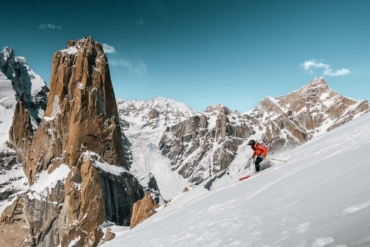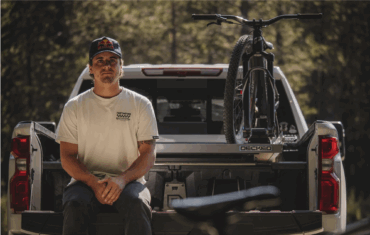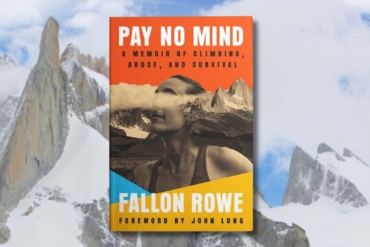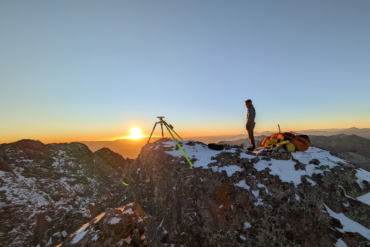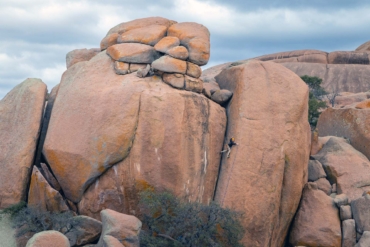It was 1997. I was in my early 20s. And I was pretty sure I was about to die.
Young and too sure of my skills, a climbing buddy and I had traveled from Minnesota to Colorado to do some climbing. Both strong ice and rock climbers, we decided to tackle the moderate rock route up the 14er Creststone Needle — in the spring. Cellphones weren’t a thing. Forecasts more than a couple of days out were iffy at best. And so, as we trudged from the snowline into the Sangre de Cristo wilderness, we really had nobody but ourselves to rely on.
A few days later, I found myself stuck at 14,000 feet, a blizzard howling as lightning struck all around. We’d dragged all our metal gear as far away as possible and huddled on a ledge, fingers crossed that a lightning strike wouldn’t end us.
Obviously, I didn’t die. We also didn’t make it to the summit. Instead, pinned about 200 feet below it overnight, I experienced one of the most terrifying and memorable nights of my life.
In terms of summiting a mountain, we failed hard.
But thinking back on that failure, I realize it was one of the foundational experiences of my younger life. It made me a better climber, safer outdoorsman, and humbler human. Without being benighted atop a mountain in my 20s, would I be the same person today? I don’t think so.
Failing leads to growth, and we should celebrate it. But a recent conversation with coworkers sparked a question that lead me to really consider the nature of failure: Without failure, is adventure even possible?
Adventure: Where Success and Failure Meet
What is adventure? The textbook definition is “an unusual and exciting, typically hazardous, experience or activity.” But in longing for these unusual and exciting activities, is one truly longing for uncertainty, or the opportunity for failure?
Certainly, adventure can be found in the everyday. It can be a glistening dew drop on a blade of grass in your neighborhood park. Or the flush of a kingfisher along a gentle creek. A joyous lark need not put our mind, body, and mental health at risk. There is fun in a day hike near the car or the daily bike commute.
But there is something different that draws us to the tops of mountains and deeper into untracked forests. And that unknown element — that dark, often unacknowledged sidekick on grand adventures — is the specter of failure.
Adventure lives where success and failure meet. It’s a sharp wavering edge that looms between summit celebrations and dangerous cliffs. It ticks by on wristwatches of those trying to tackle difficult FKTs, mere seconds a gulf of black and white between glorious victory and anonymous defeat.
In our lives, most of us measure our days and years by successes. We look back at the things we’ve accomplished, the wins, and the triumphs with joy. But how often do we look back and look for the failures?
Embracing Failure and Growth
Not seeking and revisiting these failures is a recipe for mediocrity. That’s because true growth comes with risks, and with risk, there is a much greater level of uncertainty than with most daily activities.
Carol Dweck is the Lewis and Virginia Eaton Professor of Psychology at Stanford University, and author of Mindset: The New Psychology of Success. In the book and much of her work, she posits that embracing a growth mindset, essential for success, does not shirk from failures. In it, she writes, “In the growth mindset, failure can be a painful experience. But it doesn’t define you. It’s a problem to be faced, dealt with, and learned from.”
And really, the most successful among us have often faced the most resounding failures along the way. Take polar explorer Eric Larsen, for instance. Renowned for several firsts in polar exploration, Larsen has also faced monumental failures. In 2005, Larsen and teammate Lonnie Dupre attempted to reach the North Pole in the summer for the first time.
They raised more than $350,000 for the expedition, and spent 2 months on the ice before pulling the plug.
“I was pretty down,” Larsen told me. “I looked at myself as a huge failure. But we regrouped, raised more money, and went back from Canada instead of Russia, with modified equipment. The next year, we made it to the North Pole.”
Most of us aren’t trying for such audacious goals. But the same concepts apply to the smaller adventures that fuel life in the outdoors.
A Word on Risk Mitigation
It is spring in the Himalayas and hundreds of people are lined up to climb some of the world’s highest mountains. Why are they there? These mountains have been climbed before. We know what’s on top. There, air so thin and cold it will kill in minutes awaits anyone who would like to suffer for weeks to reach it.
So, why do people really climb these mountains? My take? They need a chance to fail.
And herein lies the dark edge of adventure.
Before wading further into the depths of failure, it feels important to note that “failure” does not equal “death.” While death certainly is a possible outcome of failure, dying obviously ends the possibility for growth and further adventure.
Thus, it’s important to approach adventure activities with caution and proper risk management. This means using safety equipment, training, and preparation to minimize the risk of injury or death. By doing so, we still embrace the exciting uncertainty that difficult adventures provide and can reap the rewards they sow, even in failure.
And even in the risky world of high-altitude mountaineering, the best learn from mistakes. Renowned mountaineer Ed Viesturs discussed the need to learn from mistakes in an interview with Slate. There, he explained that “a mistake is a mistake even if you get away with it.” But even if it doesn’t result in failure, the lessons are critical. He discussed a close call on K2 that did not result in failure, but that could have easily killed him.
“Ed, you’ve made the last and most stupid mistake of your life,” he said. “… Afterward, every time I got into another situation in the mountains where I had similar feelings, I would just say, ‘Hey, don’t do that, don’t screw up like you did on K2.’ I would say, ‘You know what, I’m going down,’ and I would just be totally content with that decision.”
Failing Forward
“Only those who dare to fail greatly can ever achieve greatly.” — Robert F. Kennedy
A quick search will prove that the internet is awash with stories of people who have gone from failure to rousing success. From Oprah Winfrey to Albert Einstein to Michael Jordan, stories about failures who turn it around into resounding success are certain to inspire many.
So then, why is failure such a dark subject among those who ply in outdoors and adventure? Why do shortcomings among expeditions, on mountains, or in outdoor sports, tend to be swept under the rug and ignored? Is it because we, as a community, have forgotten the value of falling short, of failing forward?
Failure helps us learn. When we fail, we can learn from our mistakes. This applies not only to adventure but all aspects of life. And when we brush failure aside or under the rug, we lose an opportunity to grow.
So I, for one, say it’s time to celebrate failure, especially in the world of adventure. Did your Strava segment come up short of the FKT? Did you stop short of the summit, or get stymied on a first ascent? Share it with your friends and share it proudly. You are pushing yourself to a limit that deserves recognition.
Because, let’s remember, a single failure is not the end. It can be a setback. But more often than not, the most significant failures will lead to the biggest growth. And isn’t that what adventure is all about?



